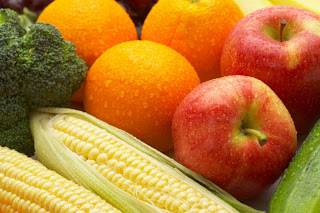by arifrahim
Photo: longevity.about.com
When one has diabetes, it is important to consider which foods fulfill the essential nutritional needs to maintain a healthy life. The best diet for diabetics is generally similar to the kind of healthy eating that is suitable for everyone. Like the general population, people with diabetes need to focus on whole foods that are both rich in nutrients and high in fiber. This includes virtually all plant foods, most dairy products, lean meat, and poultry, as well as fish. However, there are two main forms of diabetes, and while both types benefit from these whole foods, each has different nutritional goals that need to be met to ensure the healthiest way of living.
With type 1 diabetes, studies show that total carbohydrates have the most effect on the maintenance of blood sugar control and the amount of insulin needed. Without a proper balance of insulin, carbohydrate intake, and physical activity, there can be radical changes in blood glucose levels. Additionally, if you have type 1 diabetes and are on a fixed dose of insulin, the carbohydrate content of your snacks and meals should be consistent on a day to day basis. In regards to children with type 1 diabetes, weight and growth patterns have proven to be useful in determining if they are getting enough nutrition in their diet.
When dealing with type 2 diabetes, the focus is primarily on weight control since 80 - 90% of people with this disease are overweight. A meal plan with reduced calories, an even distribution of carbohydrates, and healthier monounsaturated fats can help improve blood glucose levels. Examples of foods high in monounsaturated fat include peanut butter, walnuts, and almonds, as well as other nuts. These can be substituted for carbohydrates, but because these foods are high in calories, portions should be relatively small. In many cases, moderate weight loss and increased physical activity can control type 2 diabetes, although some people may require oral medications or insulin in addition to lifestyle changes. For children with type 2 diabetes, meal plans should be recalculated often to account for the child's change in calorie requirements due to growth. Moreover, it is best to serve children three smaller meals and three snacks in order to meet calorie needs. Changes in eating habits and increased physical activity help reduce insulin resistance and improve blood sugar control. It is also important to note that during times of excessive sweet consumption, such as holidays or birthday parties, children may still continue to eat sugar-containing foods, however, their daily amount of pastas, potatoes or rice should be eliminated to maintain an appropriate balance between calories and carbohydrates.
For both types of diabetes, here are some general guidelines to follow to create the proper balance between carbohydrates, protein, and fat:
Carbohydrates
Carbohydrate choices should come from whole-grain breads or cereals, brown rice, beans, pasta, fruits, and vegetables. Increasing dietary fiber is a general guideline for the entire population rather than specifically for people with diabetes. Because carbohydrates vary in their calorie content, they essentially affect weight and blood glucose control.
Protein
Protein intake should be approximately 15 - 20% of total calories. Proteins that are low in fat are recommended, such as non-fat dairy products, skinless poultry, legumes, fish, and lean meats, with portion sizes being no larger than a deck of cards.
Fat
Reduce the amount of dietary fat. Less than 7% of calories should come from saturated fat, which raise LDL ("bad") cholesterol. Dietary cholesterol should be less than 200 mg per day. Additionally, intake of trans-unsaturated fats, which are more commonly known as partially hydrogenated oils, should be minimized. Reduction of fat intake may help contribute to weight loss.
Sugars
Limit sources of high-calorie and low-nutritional-value foods, including those with a high content of sugars. Foods containing sugar should be substituted for other carbohydrate sources (such as potatoes) rather than merely adding them on to the meal.
Source: ArticleTrader.com

No comments:
Post a Comment